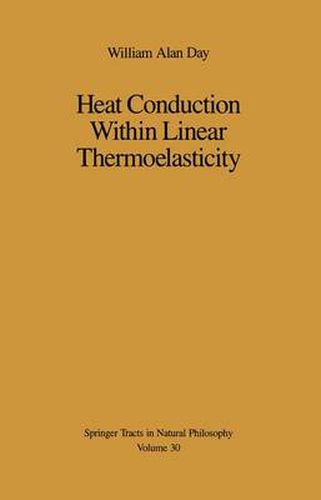Readings Newsletter
Become a Readings Member to make your shopping experience even easier.
Sign in or sign up for free!
You’re not far away from qualifying for FREE standard shipping within Australia
You’ve qualified for FREE standard shipping within Australia
The cart is loading…






This title is printed to order. This book may have been self-published. If so, we cannot guarantee the quality of the content. In the main most books will have gone through the editing process however some may not. We therefore suggest that you be aware of this before ordering this book. If in doubt check either the author or publisher’s details as we are unable to accept any returns unless they are faulty. Please contact us if you have any questions.
J-B. J. FOURIER’S immensely influential treatise Theorie Analytique de la Chaleur [21J, and the subsequent developments and refinements of FOURIER’s ideas and methods at the hands of many authors, provide a highly successful theory of heat conduction. According to that theory, the growth or decay of the temperature e in a conducting body is governed by the heat equation, that is, by the parabolic partial differential equation Such has been the influence of FOURIER’S theory, which must forever remain the classical theory in that it sets the standard against which all other theories are to be measured, that the mathematical investigation of heat conduction has come to be regarded as being almost identicalt with the study of the heat equation, and the reader will not need to be reminded that intensive analytical study has t But not entirely; witness, for example, those theories which would replace the heat equation by an equation which implies a finite speed of propagation for the temperature. The reader is referred to the article [9] of COLEMAN, FABRIZIO, and OWEN for the derivation of such an equation from modern Continuum Thermody namics and for references to earlier work in this direction. viii Introduction amply demonstrated that the heat equation enjoys many properties of great interest and elegance.
$9.00 standard shipping within Australia
FREE standard shipping within Australia for orders over $100.00
Express & International shipping calculated at checkout
This title is printed to order. This book may have been self-published. If so, we cannot guarantee the quality of the content. In the main most books will have gone through the editing process however some may not. We therefore suggest that you be aware of this before ordering this book. If in doubt check either the author or publisher’s details as we are unable to accept any returns unless they are faulty. Please contact us if you have any questions.
J-B. J. FOURIER’S immensely influential treatise Theorie Analytique de la Chaleur [21J, and the subsequent developments and refinements of FOURIER’s ideas and methods at the hands of many authors, provide a highly successful theory of heat conduction. According to that theory, the growth or decay of the temperature e in a conducting body is governed by the heat equation, that is, by the parabolic partial differential equation Such has been the influence of FOURIER’S theory, which must forever remain the classical theory in that it sets the standard against which all other theories are to be measured, that the mathematical investigation of heat conduction has come to be regarded as being almost identicalt with the study of the heat equation, and the reader will not need to be reminded that intensive analytical study has t But not entirely; witness, for example, those theories which would replace the heat equation by an equation which implies a finite speed of propagation for the temperature. The reader is referred to the article [9] of COLEMAN, FABRIZIO, and OWEN for the derivation of such an equation from modern Continuum Thermody namics and for references to earlier work in this direction. viii Introduction amply demonstrated that the heat equation enjoys many properties of great interest and elegance.